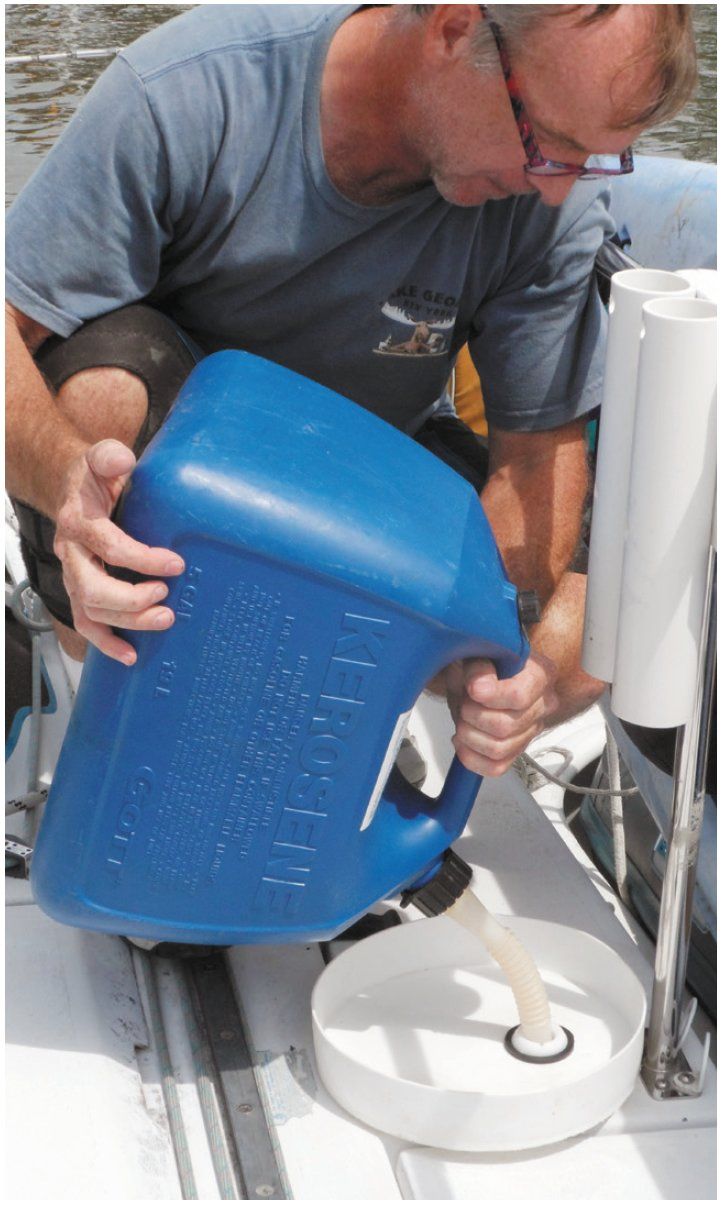
The previous owner of our test boat swore by using a funnel. Of course, the funnel was too small to catch nozzle leaks, reduced the flow, required holding a heavy can on a rocking deck for three minutes while the CARB can dribbled along, hoping the wind or rocking didnt move the funnel. (Sure, the flow is faster with non-CARB cans, but you had to reduce the flow for the funnel anyway.)
We tried absorbent pads, and they kept the mess localized, but fuel still soaked the gelcoat and the pads must be purchased, stored, and disposed of. The funnel had to be kept scrupulously clean-not an easy task since considering the way diesel loves to attract dirt-or else dirt would find its way into the tank. And then there is the smell of the funnel when youre done; where to store the funny-shaped thing?
For us, the solution was a custom, low-profile funnel that cannot tip, takes the full flow of the jerry can, and is not actually a funnel. We simply cut a 5-gallon bucket down to about two inches in height and installed a 1-inch through-hull at a convenient location; in use, we just drop the spill catcher into the deck fill.
The jerry can nozzle goes into the through-hull fitting, just as though it were the fill pipe, and only drips fall in the catcher. We can also line the catcher with an absorbent pad, which can be allowed to dry and be re-used many times. the through-hull forms a lip and because the jerry can spout is placed directly in the hole, the catcher does not have to be completely clean and generally will not be covered with gas or fuel during every use; that only happens if there is a spill. The inside of the through-hull fitting, however, must be kept clean.
This DIY spill-catcher is handy for refilling with the old-style jerry cans, but CARB-compliant jerry cans don’t seem to fit, and its not a good choice for the filling at a fuel dock. At the pump, this DIY funnel can make spills from overfilling worse because you can’t see whats going on in the fill pipe. In our experience, the FloTool siphon described in the accompanying article is still a better choice for preventing jerry-can spills.
Finally, this is not for gasoline; when transferring flammable liquids, all components of the fuel system must be conductive, and the through-hull fitting is not. You can substitute a bronze fitting or incorporate a wire to provide continuity.







































